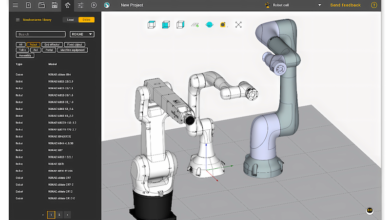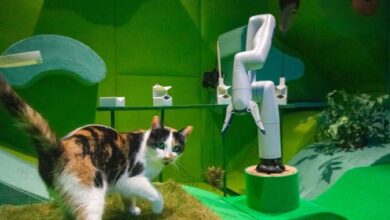Not Your Grandma’s Bakery: AI and Robots Power Priestley’s

Priestley’s Gourmet Delights is not a household name in Australia, but it distributes unbranded cakes and pastries to around 18,000 outlets nationwide.
Many Australians will have enjoyed Priestley products without knowing where they were produced, and now they will purchase them without knowing that they were made in a state-of-the-art factory using robots.
The new facility went live this month in what the company claims is an industry-first breakthrough using artificial intelligence and robots in its day-to-day operations.
Helped along with an AUD2.5 million productivity grant from the Queensland state government, Priestley’s has purchased and installed new digital systems, which include autonomous intelligent vehicles or “collaborative robots” that do much of the heavy lifting in the factory, which are also powered by a bespoke solar energy array constructed on the roof.
While robots scurry around the factory floor, humans continue to perform critical roles such as hand decorating the products and quality control.
Robots carry out work previously done by manual labor, such as lifting heavy objects.
The robots streamline the process by stacking products into baking racks and moving the products around the floor. Their introduction doubled the production capacity and reduced repetitive manual tasks for humans.
The new factory is more than 50% larger than Priestley’s previous facility and is designed to make 270,000 baked goods weekly.
Hiring more humans
Contrary to popular expectations, the introduction of robots has not seen a reduction in the human headcount. Priestley’s has been hiring more humans.
“With automation, people tend to think that means there are no people involved. But in reality, it means more workers for us,” said Priestley’s chief executive, Xanny Christophersen.
“The technology we’re harnessing will allow us to boost productivity while also enabling us to grow our people, supporting them to upskill and creating a substantial number of new jobs.”
Christophersen said the digital equipment was producing data that was being captured to provide insights that would drive further improvements and guarantee quality.
“The intent is not to lay off staff—we’re forecasting an additional 56 heads throughout our business by 2026 because of the growth.”
The new technology also tracks the temperature and location of each baked product.
The new equipment purchased has helped the business create 21 jobs and deliver another 30 new full-time roles by 2026.
Christophersen said it was not the company’s policy to “replace humans with robots.”
“What we’re doing with our staff is upskilling them and making them future proof for their careers,” she told the Australian Broadcasting Corporation.
“The intent is not to lay off staff—we’re forecasting an additional 56 heads throughout our business by 2026 because of the growth we’re forecasting.”
Government support
Priestley’s is not the only Queensland business embracing smart manufacturing as the state’s southeast develops into an advanced industrial region.
The strategy has government support, with the Queensland Government backing an AUD18 million Advanced Robotics Manufacturing (ARM) hub in collaboration with the Queensland University of Technology.
Founded in 2019, the ARM Hub provides practical production and manufacturing advice in a ‘real-life’ factory environment for manufacturers to learn the latest robotic technologies and techniques for use in their businesses.
At nearby Arundel, defense contractor Craig International Ballistics is in a completely different sector but is also taking the smart manufacturing approach.
The company provides protective body armor for the Australian Defence Force under a contract to deliver 20,000 sets.
The AUD60 million contract has enabled Craig’s to invest in its business and double the size of its manufacturing facility, installing a computer-controlled cutting machine producing complex body armor shapes and a 33-ton hydraulic press.
Craig’s has acquired advanced robotic equipment from Germany to conduct Non-Destructive Testing (NDT) on ceramic-based body armor plates.
The robotic inspections will be conducted initially on product manufacture but also throughout the item’s service life, ensuring ongoing ballistic integrity and what the company says is “zero compromise to the soldiers’ and officers’ safety.”
“Key equipment such as this new custom-designed digital robotic x-ray equipment not only improves our manufacturing quality but ensures ongoing product integrity by regular through-life x-ray inspections,” said James Craig, the company’s chief executive.
“The equipment will be used to detect internal fractures within the ceramic composite, typically as a result of in-service damage and wear, and could compromise the safety of the wearer without detection.
“Using robotics with the x-ray equipment greatly minimizes product handling and provides our company with an efficient refurbishment and re-certification process.”
Image credit: iStockphoto/Prostock-Studio



